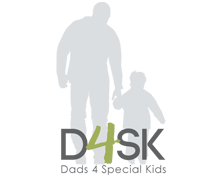Here are some helpful tips to start your own preparedness plan:
Know Your Area
- Contact your local fire station and ask if they have a program where individuals can self-disclose information on family members with disabilities and/or health issues.
- Know what dangers affect your community, such as flooding, etc., and note any special instructions on how to prepare for them.
- Know your neighborhood and where to find needed services and their contact information.
- Learn what your emergency plan is at your work.
- Develop your own simple emergency plan and practice it regularly. Plan for unique needs of your family, such as mobility challenges, behavior responses, medication/medical equipment needs.
- Make sure your plan includes family, friends and neighbors who you can trust and who can help you immediately after an emergency.
- Learn CPR/First Aid
Creating an Emergency Plan
- Identify all the dangers in your home.
- Establish basic survival needs in case of emergency.
- Post emergency phone numbers in an accessible place, including family/friends/medical professionals contact information.
- Make sure you know all evacuation routes available in your home and neighborhood.
- Determine a meeting place with your contacts after an emergency or evacuation.
- Prepare essential disaster supplies, including: Water; canned foods, peanut butter, granola bars, juices, etc.; flashlight and extra batteries; portable battery operated radio; prescriptions and over-the-counter medications; medical information lists/tags; pencil and paper; blanket; whistle; complete set of clothes for each family member; personal care and comfort items (eye glasses, toys, books, etc.); important personal documents (medical, immunization records, insurance cards, cash, credit cards, etc.); First aid supplies.
- Develop a support system that will contact and/or assist you in an emergency.
Helpful Hints
- Keep a 7 day supply of necessary prescriptions and medical supplies at all times.
- Keep your personal records in a water-proof container and with your emergency supplies, so you can take it in case of evacuation.
- Create and carry a personal emergency information card for yourself and each family member for emergency personnel/first responders.
- Contact your power company and notify them of any family member whose medical needs are electricity-dependent.
- Preparing for emergencies takes time, but it is easy to do if you accomplish small steps frequently. Try to arrange emergency supplies little by little, unless you can do it all at once. Emergency supplies should be easy to gather, carry and use.
For more helpful information, contact your local Fire Department or your local Red Cross chapter.
Below are some helpful links:
http://www.ready.gov
Preparing Makes Sense for People with Disabilities and Special Needs. 3 steps for being prepared for emergencies. Homeland Security.
http://www.nfpa.org/catalog/product.asp?catalog%5Fname=NFPA+Catalog&pid=SETVCR16&link%5Ftype=search&src=nfpa
Disability Evacuation Training Program VHSA/DVD. Complete toolkit that helps safety directors develop and implement evacuation plans that comply with Americans with Disabilities Act Standards.
http://www.nfpa.org/catalog/product.asp?category%5Fname=&pid=BR18G&target%5Fpid=BR18G&src%5Fpid=&link%5Ftype=search
Safety for people with disabilities: National Fire Protection Association: People who have a disability need to think about how it might affect their ability to escape a fire and plan accordingly. Hand out these fact-filled Fire Safety for People with Disabilities brochures and teach them how to handle fire emergencies and what they should do if they can’t escape.

